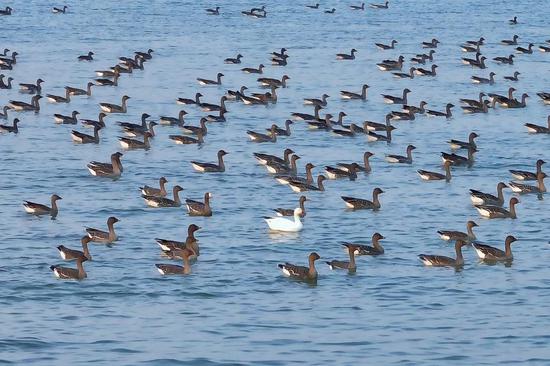Chinese scientists have discovered there were magma activities on the far side of the moon 4.2 to 2.8 billion years ago, lasting for at least 1.4 billion years, further enhancing our understanding of the moon's evolution.
Two related studies based on the samples retrieved from the lunar far side by the Chang'e 6 mission were simultaneously published in the international academic journals Nature and Science on Friday.
There are significant differences between the near and far sides of the moon in terms including morphology, composition and magma activity, and the formation of these differences is a key issue in lunar research.
"Unraveling the volcanic history of the far side of the moon is crucial for understanding the hemispheric dichotomy of the moon," said Li Qiuli, a professor from the Institute of Geology and Geophysics of the Chinese Academy of Sciences.
Previously, scientific understanding of the lunar far side was mainly based on remote sensing studies. In June, China's Chang'e 6 lunar probe returned nearly 2 kilograms of samples to Earth for the first time.
These samples were collected from the South Pole-Aitken Basin, the largest, deepest and oldest basin on the moon.
Since 2021, Chinese scientists have used lunar soil samples returned by the Chang'e 5 mission to demonstrate that significant magma activity still existed on the nearside of the moon 2 billion years ago, and minor volcanic activity persisted as recently as 120 million years ago.
In the study published on Friday in Nature, a research team from the Institute of Geology and Geophysics and the National Astronomical Observatory of the Chinese Academy of Sciences demonstrated magma activity on the lunar far side from 4.2 billion years ago to 2.8 billion years ago through dating research on 108 basaltic rock fragments from 5-gram lunar soils.
The study published on Science, conducted by a team led by Xu Yigang, an academician of the CAS and a researcher at the Guangzhou Institute of Geochemistry of the CAS, also confirmed magma activity on the lunar far side 2.8 billion years ago.
The study also indicates that the eruption of lunar mare basalt is influenced by the internal composition of the moon, explaining why the South Pole-Aitken Basin on the lunar far side lacks abundant volcanic activity.
"These samples are the first to be collected on the lunar far side so it provided a unique view to the moon's global geological history. The results are novel and are deserving of publication in Science. They will be of interest to a broad readership," Science reviewer Katherine Joy said.


















































 京公网安备 11010202009201号
京公网安备 11010202009201号